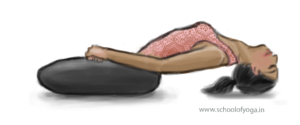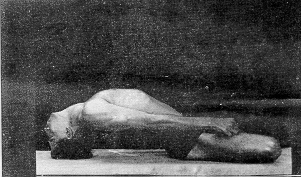Post By: Vishwanath Iyer Published on: December 14, 2016 Reading time: 3 minutes
Matsyāsana is a mandatory āsana that is performed after halāsana and sarvāsana to reverse the spinal pressure on the neck. Matsyāsana is an advanced āsana and must be learned under the guidance of an expert.

Matsyasana (fish pose)
 Firstly, if you have any form of back ache, do not attempt this āsana without expert supervision and support.
Firstly, if you have any form of back ache, do not attempt this āsana without expert supervision and support.Internal Links: Dharma (conditioning), Stress and Situational Awareness, Prana, Asana sequence, Asana schedule, Asana Focus or gazing, Pranayama, Hatha Yoga Pradeepika
External Links: Prana, Chakra, Pancha Tattva, Pancha Prana, Pancha Kosha, Nadi,